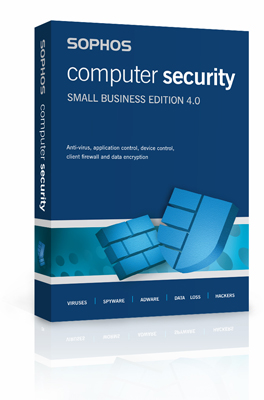Sophos Antivirus protects your computers from the latest viruses from email, CD, floppy disk, network shares, instant messaging, web download etc. Using patented InterCheck technology, Sophos's 'on-access' scanner provides constant real-time protection with minimal system overhead. 1 About Sophos Anti-Virus Sophos Anti-Virus for Mac OS X is software that detects and deals with threats (viruses, worms, and Trojans) on your Mac or network. As well as being able to detect Mac OS X threats, it can also detect Windows threats that might be stored on your Mac or network and transferred to Windows computers. Sophos Home is powered by the same award-winning Sophos endpoint protection technologies used by businesses all over the world. '#1 Malware Protection Rate - Sophos Intercept X Advanced blocked 99.9% of the malware with 0 false alarms'.
March 6, 2020



Workers at risk of exposure to infection or disease – such as childcare workers, airport security, police officers and firefighters – need workplace response plans for outbreaks such as COVID-19.eommina/Pixabay
A University of Washington researcher calculates that 14.4 million workers face exposure to infection once a week and 26.7 million at least once a month in the workplace, pointing to an important population needing protection as the novel coronavirus disease, COVID-19, continues to break out across the U.S.
Marissa Baker, an assistant professor in the UW School of Public Health, based her calculations on research she published in 2018 in the American Journal of Industrial Medicine. In that paper, Baker and co-authors calculated that about 8% of workers in Federal Region X — comprised of Alaska, Washington, Oregon and Idaho — work in jobs where exposure to infection or disease occurs at least once a week at work. Those risks include flu-like illnesses, MRSA and other respiratory illnesses, like COVID-19, as well as wound infections.
Using federal employment data, and the same analysis method, Baker and her co-authors determined:
- 10% (14,425,070) of U.S. workers are employed in occupations where exposure to disease or infection happens at least weekly, based on employee and employer self-report.
- 18.4% (26,669,810) of U.S. workers are employed in occupations where exposure to disease or infection happens at least monthly, based on employee and employer self-report.
Update April 28: The paper was originally posted on the preprint server medRxiv but has now been peer reviewed and published in PLOS ONE. This release has been edited to reflect that change.
For journalists
“While healthcare occupations represent the bulk of workers exposed to infection and disease, other occupations that frequently interface with the public and provide essential services are also at increased risk of exposure. Those include police officers, firefighters, childcare workers, and personal care aides,” said Baker, who is also program director of UW’s Industrial Hygiene/Exposure Science program, Department of Environmental & Occupational Health Sciences. “This underscores the importance of all types of occupations developing workplace response plans for infectious disease.”
While those response plans must include how to keep workers safe from exposure at work, Baker added, they must also ensure workers don’t have to show up sick, potentially spreading disease within and outside the workplace.
Some workers who are in higher paying and more secure jobs, often salaried, can work from home or afford more time away from work, but many don’t have these same options, such as workers who participate in the gig economy or are independent contractors and are typically not considered employees. These workers don’t benefit from employee protective policies, such as sick leave, putting them at increased risk of having to work when they or a loved one is sick, despite public health guidance.
Even if a worker does have paid sick leave, and knows how to access it, a variety of other real and perceived pressures — such as an economy that rewards people who are working hard at all times, or pressure to perform work that no one else can perform, encourages workers to come to work sick, a phenomena researchers term “presenteeism.”
“Our findings serve as an important reminder that the workplace should be a focus for public health intervention, especially during disease outbreaks such as COVID-19,” Baker said, adding that researchers produced the new work to help shed light on this fact, and to respond to questions about their 2018 paper and its application to the current, nationwide outbreak. Estimating the burden of U.S. workers exposed to infection or disease is a key factor in containing risk of COVID-19 infection.
Uw Sophos Email
“The public health implications from our study,” Baker said, “are that workplaces need to make sure that they are not only protecting their workers at work, but also coming up with contingency plans to make sure that sick workers are not coming to work, and that can be accomplished through training workers to fill in for each other, providing additional paid sick leave during this time and similar measures.”
Sophos Employee Home
Co-authors include Trevor Peckham and Noah Seixas, UW Department of Environmental & Occupational Health Sciences, School of Public Health. This research was funded by the National Institute for Occupational Safety and Health (NIOSH).
Learn more about the UW’s Population Health Initiative: a 25-year, interdisciplinary effort to bring understanding and solutions to the biggest challenges facing communities.
Uw It Connect Sophos
Tag(s): COVID-19 • COVID-19 studies • Department of Environmental & Occupational Health Sciences • Industrial Hygiene and Exposure Science • Marissa Baker • Noah Seixas • population health • School of Public Health • Trevor Peckham